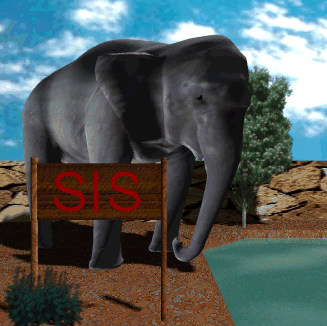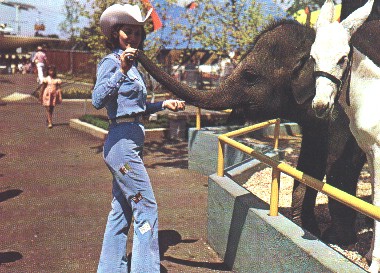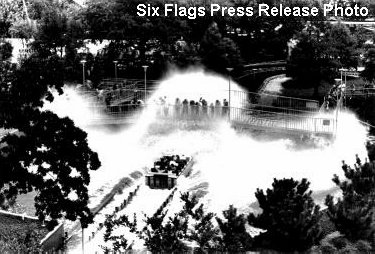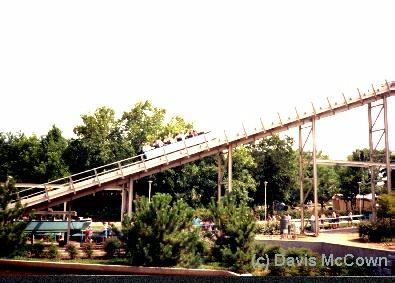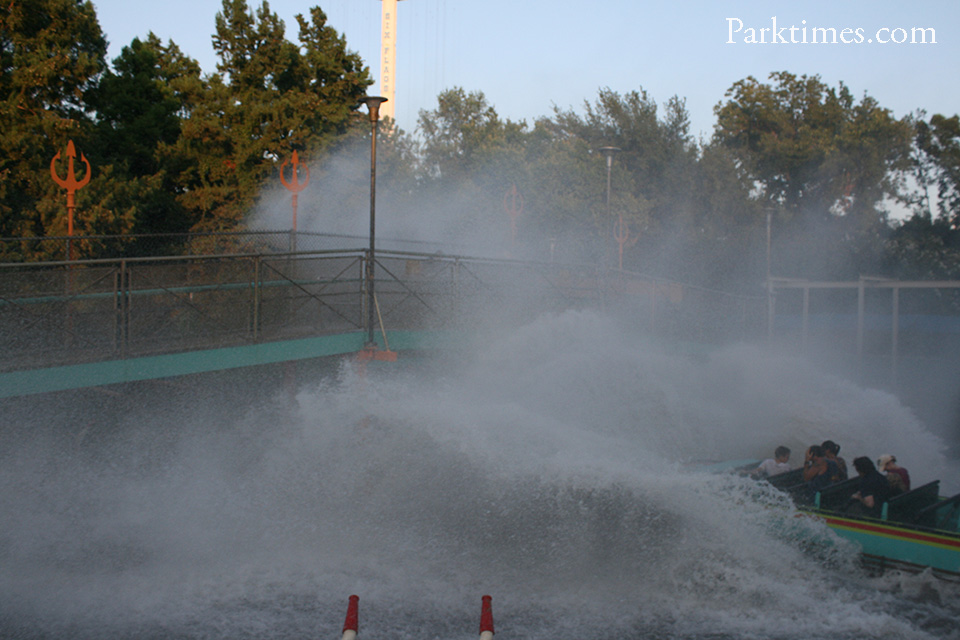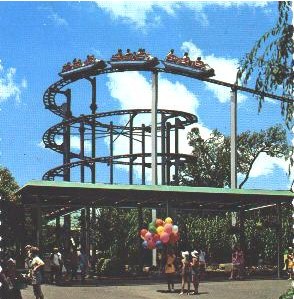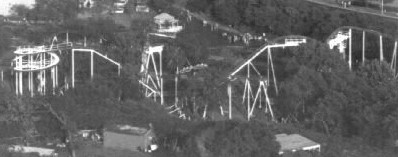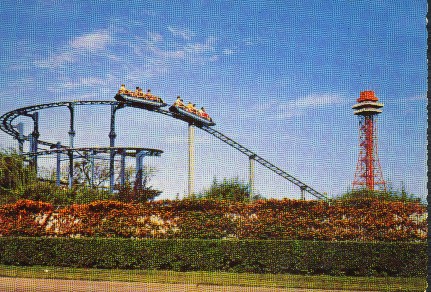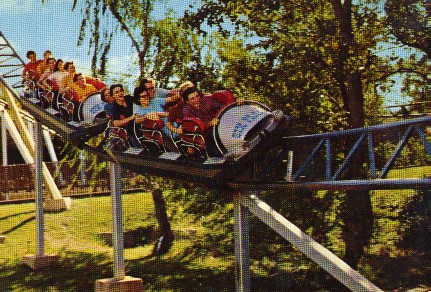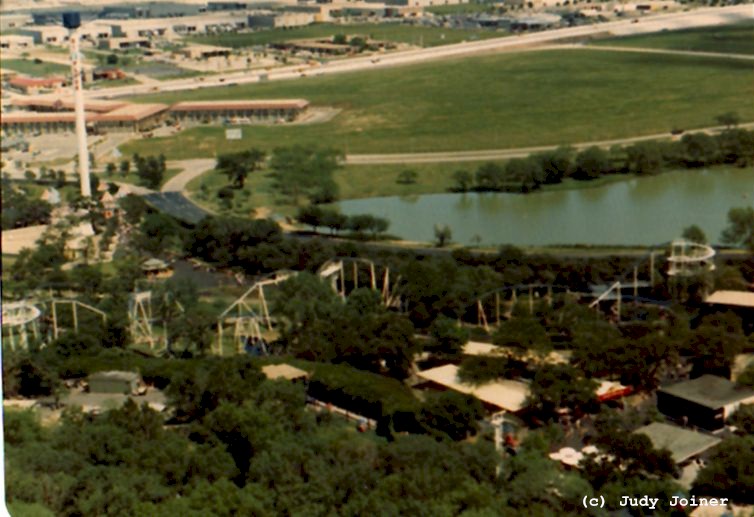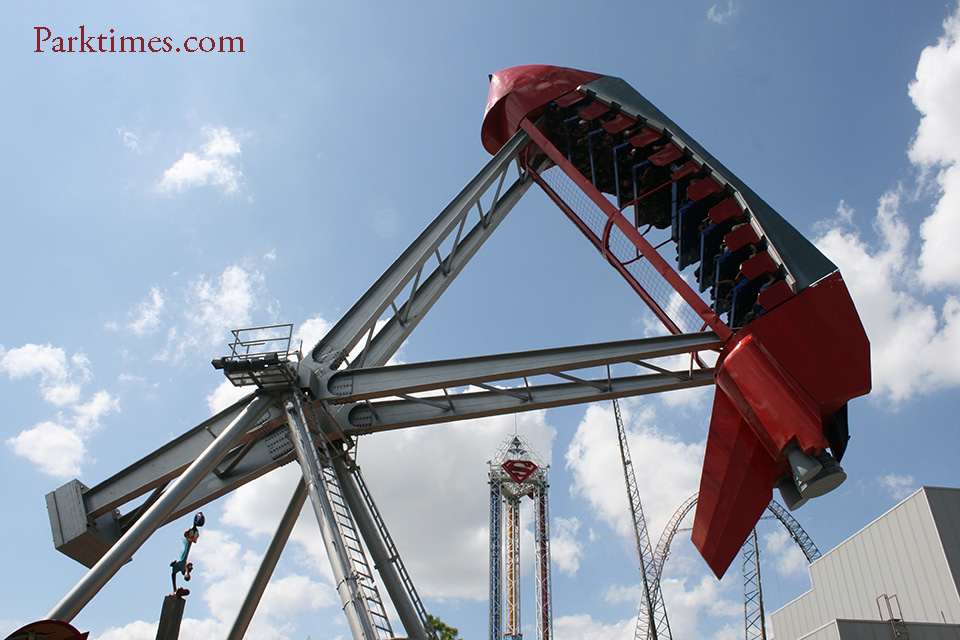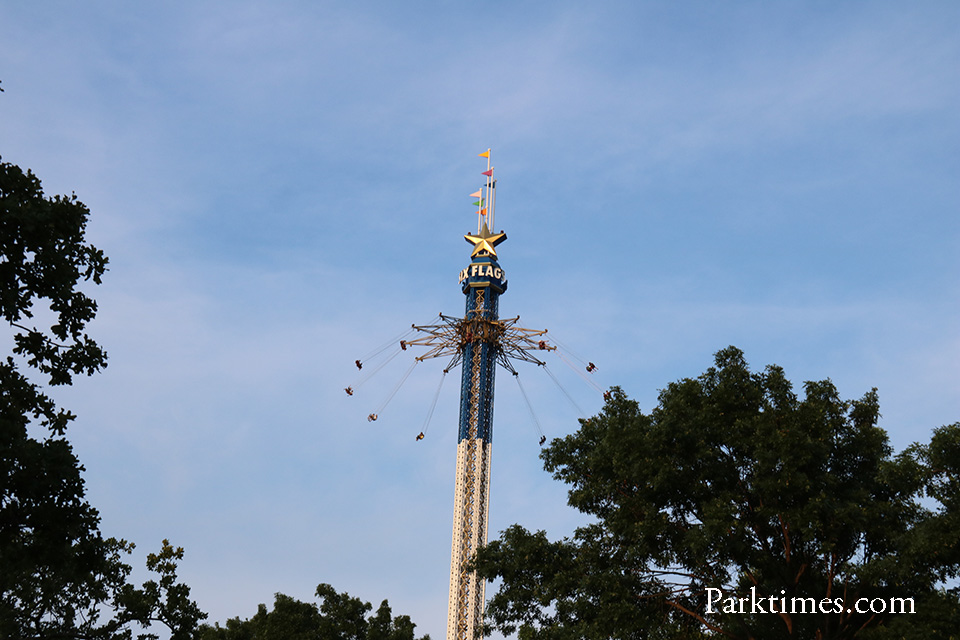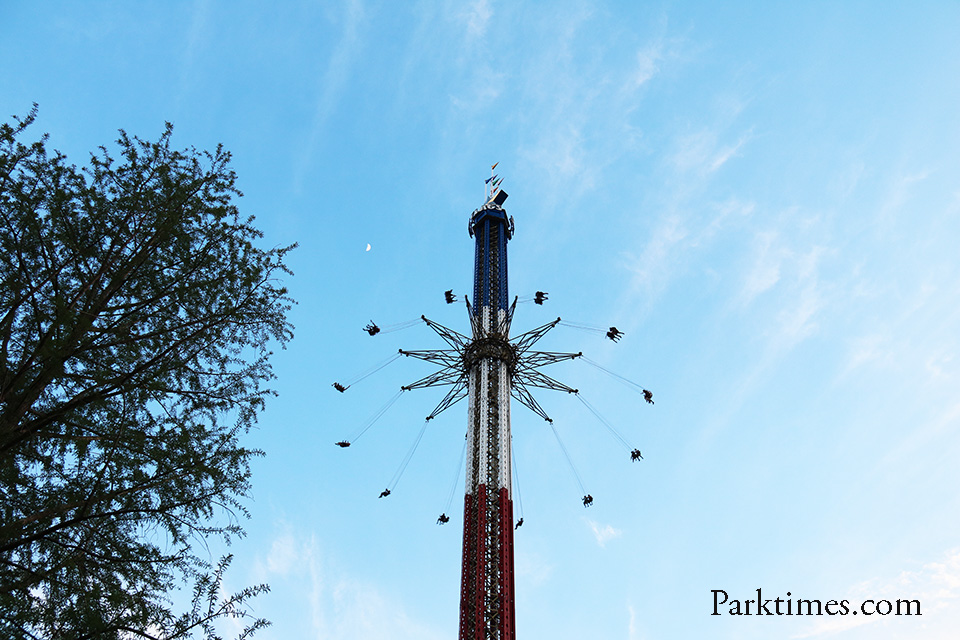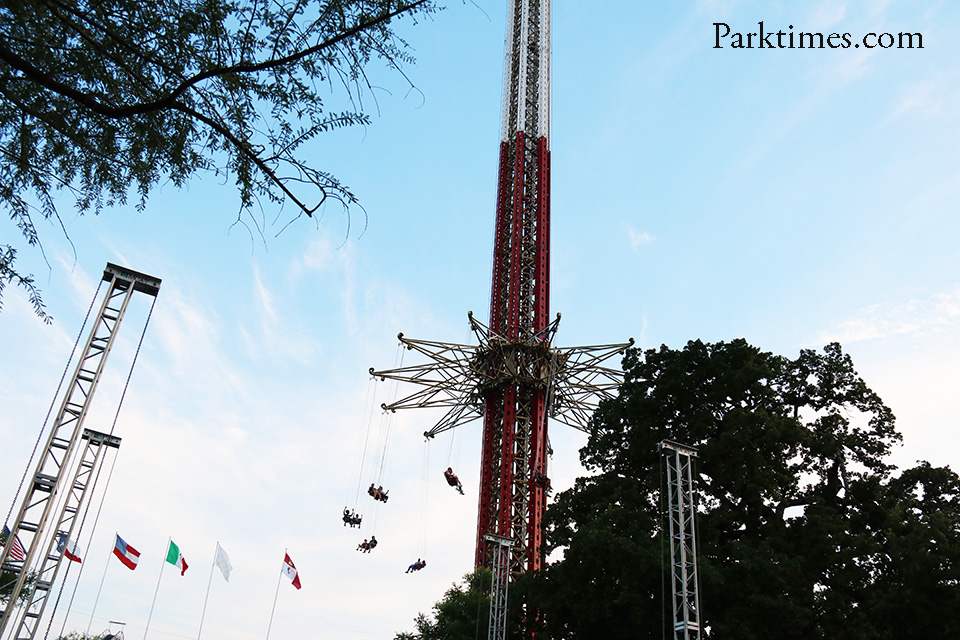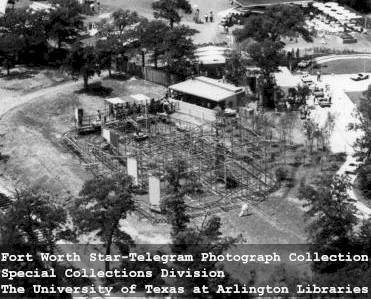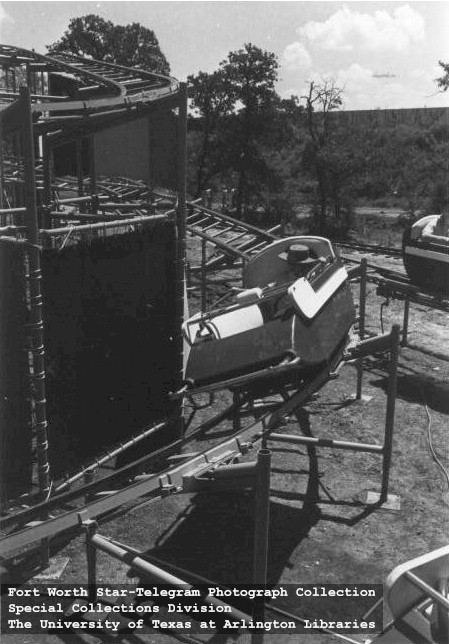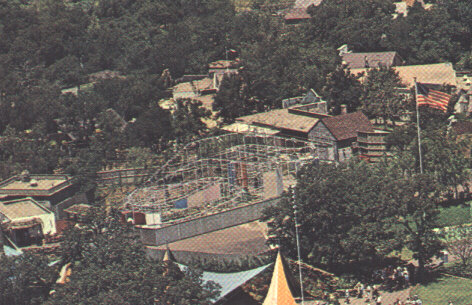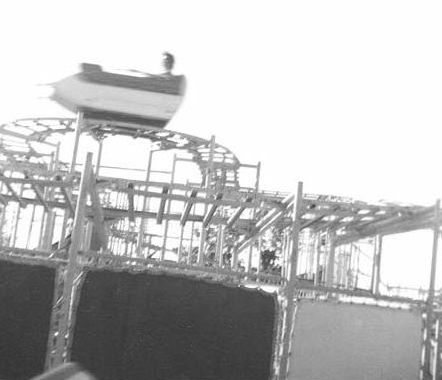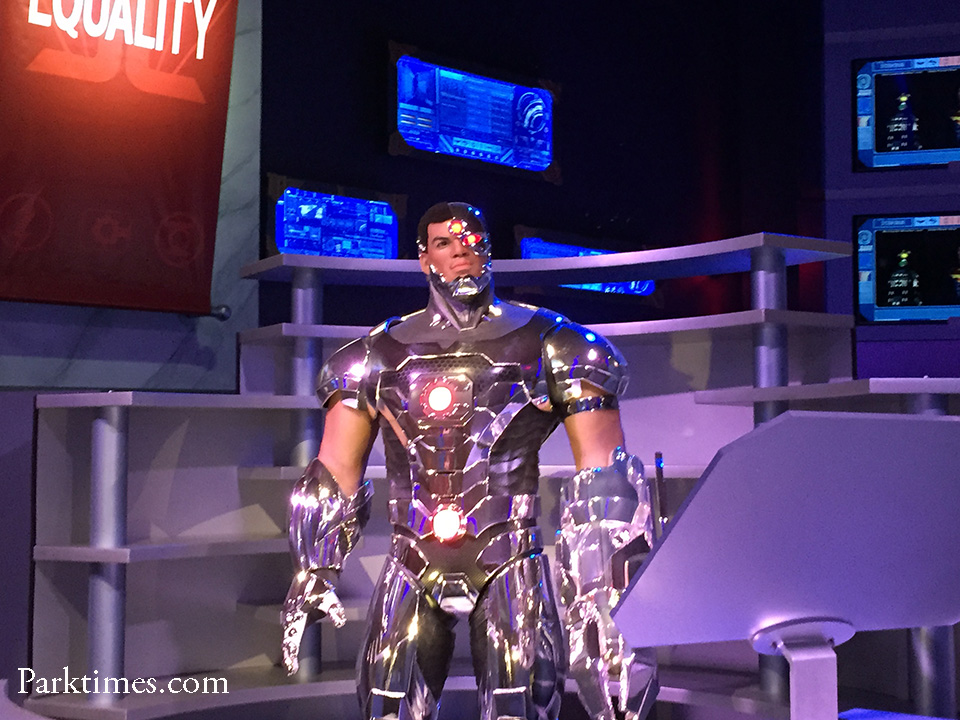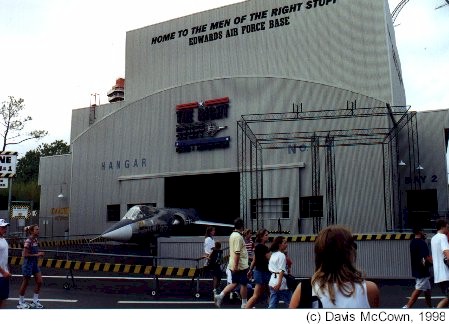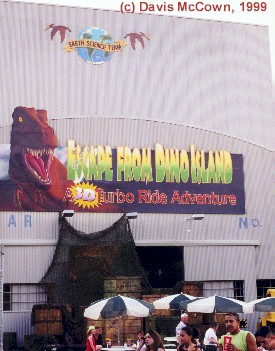The Story of Sis, The Six Flags Elephant
When Six Flags first opened in 1961, one of the attractions was a petting zoo. The zoo was located in the USA section in the area where Looney Tunes Land is now located.
One of the most notable attractions at the zoo was Sis the Six Flags Elephant (Sissy). In fact, there were several “Sis” Elephants. Due to the rate at which the young elephants grow, each “baby” elephant was replaced after one or two seasons. This article concerns Sis VI, the sixth Elephant to live in the Six Flags Petting Zoo. Sis has had a most exciting, although not always happy, live.
The elephants in the pictures to the right are actually earlier Sis elephants. One is SIS II. Sis I was in the park from 1961 through 1963. The first SIS is shown in two of the shots to the right.
BACKGROUND
Sis is an Asian Elephant, from Bangkok, Thailand. She came to Six Flags in April of 1969. At that time, she was five months old, 34 inches high and weighed 160 pounds. Her exact birthday is unknown, so it has been sat at December 1, 1968.
Sis apparently was removed from her Elephant family too soon, and as a result, did not properly develop socialization skills necessary to interact with other elephants.
SIX FLAGS
Sis was officially named “Sis Flagg” by the park, as a play on the name Six Flags. She was a regular feature in the petting zoo as shown by the shots on the right of earlier Sis elephants.
The Story of Sis
I Believe that this is Young Sis II
This is the Elephant in the Article
Sis I at the Petting Zoo, early 60s.
This is the First SIS and not the SIS in the Article.
Sis I at the Petting Zoo, early 60s.
This is also the First SIS and not the SIS in the Article.
Larry Thomas is on the right.
Her life in the park was essentially uneventful. Other than the occasional complaint that she stepped on someone’s foot, or push someone into the rail, she got along well.
Eventually, however, she became too large to keep as a petting Zoo animal. She left the Six Flags amusement park in November of 1969.
There were more Sis Elephants after Sis VI. In particular, there was one that died in the park in about 1975. That may have been the last elephant Six Flag’s had, as the park stopped keeping elephants in the mid 1970’s. The Petting Zoo was closed after the 1982 season and converted into the Children’s ride area. It is now Looney Tunes land.
In any case, Sis was sold to the Frank Buck Zoo in Gainesville, Texas in November of 1969. The school children of Gainesville collected pennies to buy the elephant. The children raised $3,900.00. The park sold the elephant for her purchase price of $3,400.00, so the Zoo had $400 left over for the care of Sis.
She was very popular at the Zoo. She was called Gerry II at Gainesville, because she replaced an elephant that died and was known as Gerry. She was a favorite attraction at the Zoo.
THE FLOOD of 1981
The Zoo was, however, built in a flood plain. In 1981, it flooded and Sis was literally submerged. She had to stick her trunk up in the air and wrap it around a tree limb just to breath. She was trapped in the flood waters for over a day.
Such suffered trauma as a result of the storm and still has problems dealing with storms and being washed.
THE FORT WORTH ZOO 1986-1988
In 1986 she was sent to the Fort Worth Zoo at the age of 24. This was the first time that she had been with other elephants. She did not adjust well to the unfamiliar surroundings and was not equipped to deal with the other elephants. After a very unhappy two years, she returned to Gainsville.
THE GAINSVILLE INCIDENT MAY 1997
She went back to Gainsville, which was essentially her life long home. But after she returned to Gainsville, a Zoo Keeper was killed in Sis’s enclosure. Although it is not know what happened, Sis became known as a killer and Gainsville wanted to be rid of her.
THE HOUSTON ZOO APRIL 1998
In April of 1998, Sis went to the Houston Zoo where she could again be with other Elephants at a top rate facility. She still could not socialize well with other and was suffering depression from her various traumas.
THE EL PASO ZOO NOVEMBER 1998
The Houston Zoo was just a temporary stopping point while arrangements were made for her new home at the El Paso Zoo. She was sent to the El Paso Zoo before her new home was completely made ready.
MISTREATMENT
Her arrival at the El Paso was videotaped. She was treated so badly by Zoo Keepers when she arrived that the City Council voted to remove her from the Zoo.
Those that have viewed the videotape described it as a “savage beating.” She was struck on her legs with bats and ax handles. The beating lasted several hours.
She was not received well by the other elephants either, and one knocked her over at least twice. A crane had to be used to stand her back up.
As a result of her beating, the US Department of Agriculture charged the Zoo with violations of the Federal Animal Welfare Act. In addition, the Zoo Director resigned.
While at El Paso, she suffered a partially paralyzed trunk as well.
THE ELEPHANT SANCTUARY 2000
As of January 26th, 2000, Sis is at The Elephant Sanctuary in Hohenwald, Tennessee. Upon her arrival, she was in poor health, did not eat or sleep well and suffers emotional trauma. She is now, however, doing very well, although she may have to undergo tooth surgery. She is even learning to get along with the other elephants.
The Elephant Sanctuary bills itself as the “first natural habitat refuge developed specifically for endangered Asian elephants.” It operates on 800 acres near Nashville.
Hopefully, she can spend the rest of her days at the Sanctuary in peace. Normally, her lifespan in the wild would be nearly 70s years. She is now forty-two.
Read more about Sis at Sissy’s Page at the Elephant Sanctuary.
Donations for her support can be made at: Sissy’s Support page.
last update: March 8, 2008




